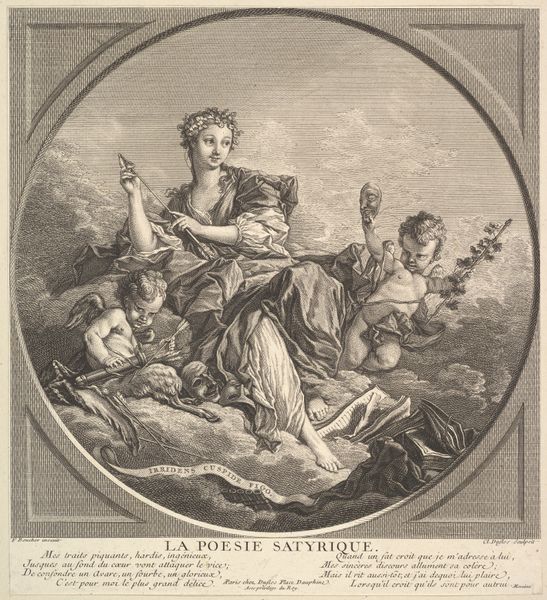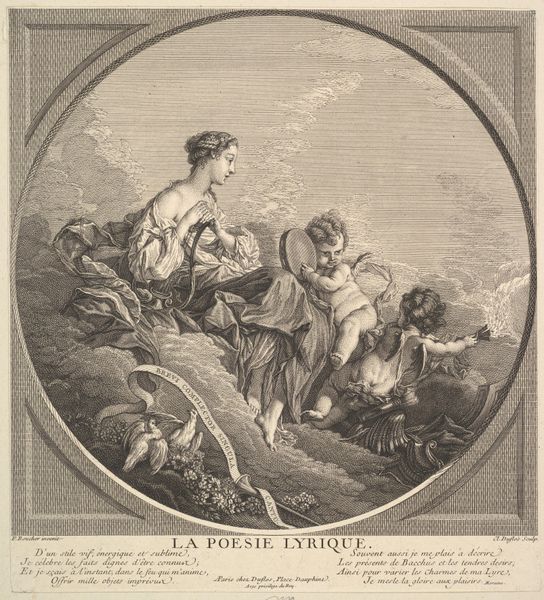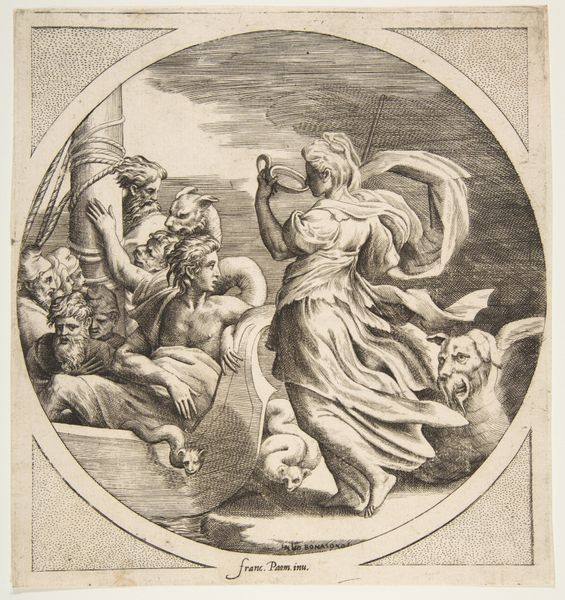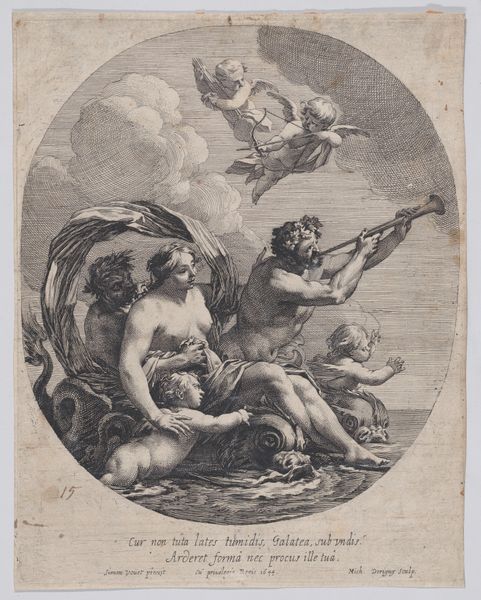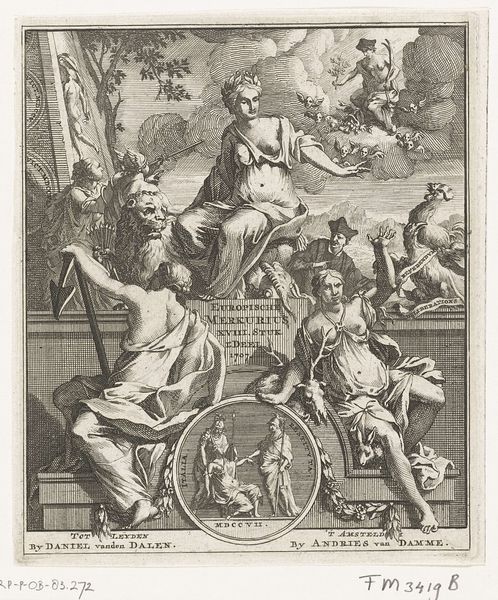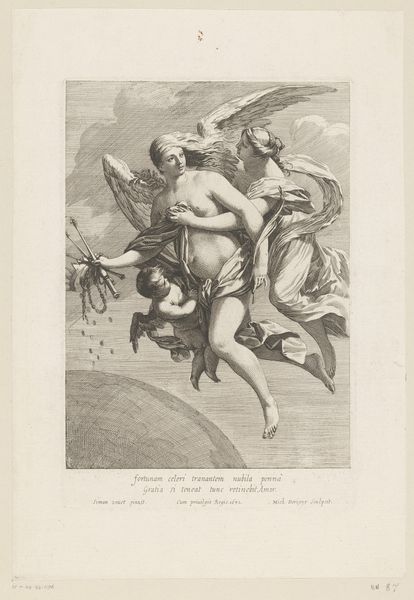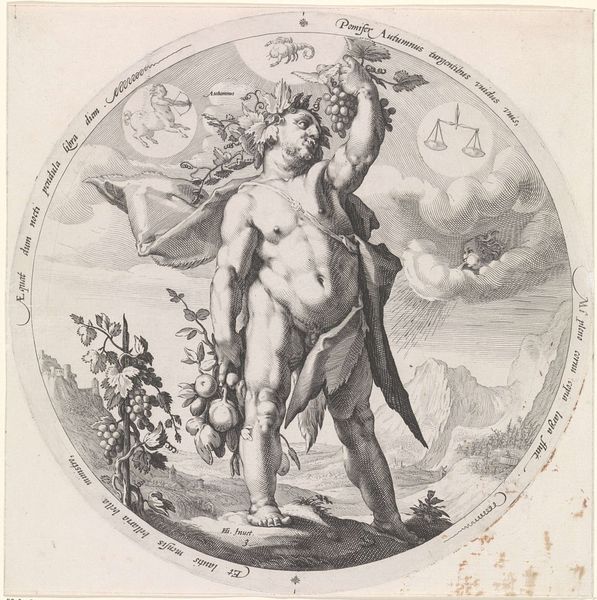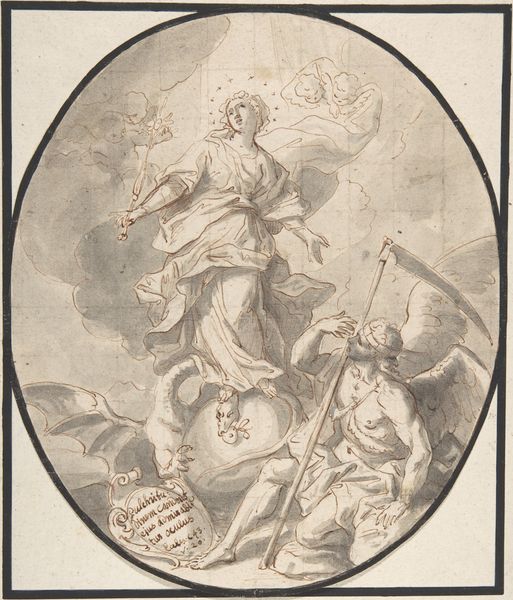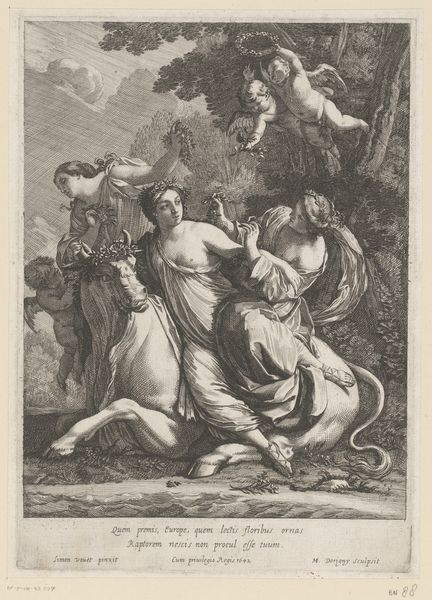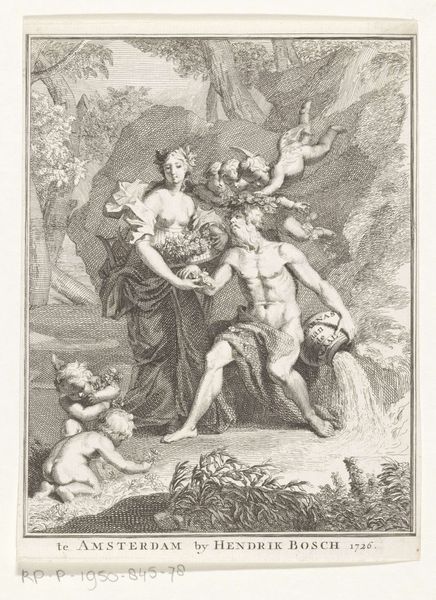
drawing, print, engraving
#
drawing
#
allegory
#
baroque
# print
#
old engraving style
#
caricature
#
figuration
#
line
#
history-painting
#
engraving
Dimensions: Sheet (trimmed): 10 1/4 × 9 5/16 in. (26 × 23.6 cm)
Copyright: Public Domain
Curator: Welcome. We are looking at "Epic Poetry," an engraving by Claude Augustin Duflos le Jeune, dating from about 1736 to 1746. Editor: It feels incredibly theatrical, almost operatic, with that central figure draped in fabric and surrounded by cherubs. It certainly embodies a kind of high drama through its precise linear construction. Curator: Absolutely. Let's consider the social context here. This image reflects the Baroque aesthetic that favored grandeur and elaborate symbolism. Prints like these were important for disseminating artistic ideas across Europe, and they played a significant role in shaping public perceptions of heroism and art's function in elevating individuals to godlike status, a notion highlighted by the engraving's inscription at the bottom of the image. Editor: You are right to point out that the inscription underscores the work's propagandistic use of the printmaking medium; its purpose was surely to legitimize the subject via elevation to this quasi-divine level, an important attribute considering the ruling power structures of the time. The materiality of the printmaking itself—the paper, the ink, the meticulous lines—serves to physically embody and transmit these ideas to a broader audience. This challenges assumptions that engraving only functioned in reproduction of original drawings but as original compositions of symbolic elevation of its own right. Curator: And if we think about its current home, the Metropolitan Museum of Art, we also see how the piece speaks to institutional values and the art market's endorsement of classical allegory within canonical historical narratives. The engraving enters into an active dialogue between artist, subject, patron, and its viewing audience at the time of its production and how it finds new relationships with those that it enters into in later viewing eras such as ours now in this museum context. Editor: This image also raises questions about labor. Printmaking required a high degree of skill and patience; in these years we find artisanal workshops and processes where the meticulous labor involved highlights that such artmaking also represented forms of early industrial output within society’s creative economy. Curator: Indeed, considering those aspects allows us to understand it far beyond just a pretty picture; "Epic Poetry" gives insight into societal power dynamics. Editor: It becomes a multifaceted window onto a whole era and the making of a visual idea.
Comments
No comments
Be the first to comment and join the conversation on the ultimate creative platform.
